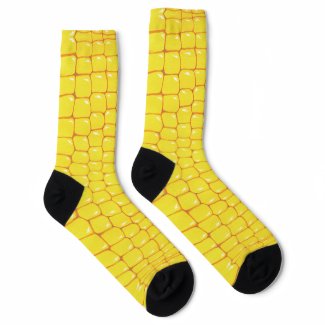Problem 1
How many sets of integers greater than $1$, with two or more elements, have the property that the product of their elements is $210$?
Solution
Notice that $210 = 2 \cdot 3 \cdot 5 \cdot 7$.
There is only one set of $4$ elements: $ \{ 2,3,5,7 \} $.
There are $6$ sets of $3$ elements: $ \{ 2 \cdot 3,5,7 \}$, $\{ 2 \cdot 5, 3, 7 \}$, $\{ 2 \cdot 7, 3, 5 \}$, $\{ 3 \cdot 5, 2, 7 \}$, $\{ 3 \cdot 7, 2, 5 \}$, $\{ 5 \cdot 7, 2, 3 \}$.
There are $7$ sets of $2$ elements: $ \{ 2 \cdot 3,5 \cdot 7 \}$, $\{ 2 \cdot 5, 3 \cdot 7 \}$, $\{ 2 \cdot 7, 3 \cdot 5 \}$, $ \{ 2, 3 \cdot 5 \cdot 7 \}$, $ \{ 3, 2 \cdot 5 \cdot 7 \}$, $ \{ 5, 2 \cdot 3 \cdot 7 \}$, $ \{ 7, 2 \cdot 3 \cdot 5 \}$.
Therefore, the number of such sets is $\boxed{ 14 }$
Problem 2
Find the smallest positive integer $x$ such that the sum of its digits is equal to $2022$ and the product of its digits is $35^{11}$.
Solution
Notice that $35^{11} = 5^{11} \cdot 7^{11}$. Therefore, the only possible digits of the number $x$ are $1$, $5$ and $7$. There are exactly $11$ digits $5$, $11$ digits $7$ and the rest $n$ digits are $1$. Then we have
$$ 5\cdot 11 + 7 \cdot 11 + 1 \cdot n = 2022 $$
from where $n=1890$. Therefore, using $1890$ digits are $1$, $11$ digits $5$, and $11$ digits $7$ we obtain the smallest number $x$: $ \boxed{ 11…1155…5577…77} $
Problem 3
It is desired to divide the set $\{1,2,…,n\}$ into $12$ subsets, with no elements in common, in such a way that the sum of the elements of each subset is the same. Find the smallest value of $n$ for which this is possible.
Solution
Since the subsets have no elements in common, then there are no two subsets of $1$ element each. Therefore, there can only be at most one subset of one element. Each other subset has at least two elements and, therefore, $n \geq 11 \cdot 2 + 1 = 23$. For $n=23$, the division of the set $\{1,2,…,23\}$ into $12$ subsets can be done as follows:
$$ \{23\}, \{1,22\}, \{2,21\}, … , \{11,12\} $$
Therefore, the smallest value of $n$ is $\boxed{ 23 }$
Problem 4
Find all positive integers $n$, such that the expression
$$ \frac{1 + 11n}{2n – 1} $$
is an integer.
Solution
Notice that
$$ 2(1 + 11n)-11(2n – 1) = 13 $$
Since $2n – 1$ divides $1+11n$, the it should also divide $13$. From here $2n-1$ can only be $1$, $-1$, $13$ and $-13$, which result in the following positive values of $n$: $\boxed{1,7}$
Problem 5
A hexagon that is made up of $6$ congruent right triangles. What is the ratio of the areas of the inner hexagon to the outer hexagon?
Solution
Since the angle of a regular hexagon is $120^{\circ}$, then each right triangle has angles $30^{\circ}$, $60^{\circ}$, $90^{\circ}$. If $x$ is the side of the inner hexagon, then $x\sqrt{3}$ is the side of the outer hexagon. The ratio of the areas, therefore, is equal to
$$ \left( \frac{x}{x\sqrt{3}} \right)^2 = \boxed{ \frac{1}{3} }$$
Problem 6
Let $f$ be a function, which satisfies that
$$ f(2022 + x) = f(2022 – x) $$
for every real number $x$. If the equation $f(x) = 0$ has exactly four different solutions, determine the value of the sum of those four solutions.
Solution
Let $g(x)=f(2022 – x)$. Then
$$ g(-x) = g(x) $$
from where $g(x)$ is even and has exactly four different zeros $x_1$, $x_2$, $x_3$, $x_4$. This implies that these zeros are symmetric with respect to the origin and their sum is zero: $x_1+x_2+x_3+x_4=0$. Notice that if $a$ is a zero of $g(x)$, then $2022-a$ is a zero of $f(x)$. Therefore
$$ 2022-x_1 + 2022-x_2 + 2022-x_3 + 2022-x_4 = 8088 – \left( x_1+x_2+x_3+x_4 \right) = \boxed{8088} $$
Problem 7
A circle passes through the vertices $C$ and $D$ and is tangent to the side $AB$ of the squares $ABCD$. What is the ratio of the area of the square to the area of the circle?
Solution
Let $O$ be the center of the circle, $E$ be the point of tangency, $F$ be the midpoint of $CD$, the side of the square be $2x$ and the radius of the circle be $R$. Then from the Pythagorean Theorem for the triangle $OCF$:
$$ x^2 + (2x-R)^2 = R^2 $$
from where $R=\frac{5x}{4}$.
The ratio of the areas, therefore, can be found as
$$ \frac{(2x)^2}{\pi \left(\frac{5x}{4}\right)^2 } = \boxed{ \frac{64}{25\pi} } $$
Problem 8
Let $x_n$ be a sequence of real numbers, such that
$$ x_{n+1} = 2x_n – x_{n-1} $$
Given that $x_2 = 3$, $x_5 = 7$, what is the value of $x_{10}$?
Solution
Let $x_1=a$. Then it can be shown by induction that
$$ x_n = 3(n-1) – a(n-2) $$
Since $x_5 = 7$, then $a=\frac{5}{3}$, and $x_{10}= \boxed{ \frac{41}{3} }$
Problem 9
For positive integers $x$ and $y$, such that
$$ \frac{1}{2022} = \frac{1}{x} – \frac{1}{y} $$
what is the smallest possible value for $x+y$?
Solution
Let us get rid of fractions and rewrite the equality as
$$ xy = 2022(y-x) $$
and factor it as
$$ (2022-x)(y+2022)=2022^2 $$
From here $2022-x$ is a factor of $2022^2$. The smallest value of $x+y$ is reached for $x = 674$, $y = 1011$ and $x+y= \boxed{ 1685 }$
Problem 10
Given
$$ M = \sum_{n=2}^{2021} { \left( \frac{n+1}{(n-1)!+n!+(n+1)!} \right) } $$
Find the value of
$$ 2022! \cdot \left( M-\frac{1}{2} \right) $$
Solution
Notice that
$$ \frac{n+1}{(n-1)!+n!+(n+1)!} = \frac{n+1}{(n-1)! \cdot \left(1+n+n(n+1) \right) } = $$
$$ \frac{n+1}{(n-1)! \cdot (n+1)^2 } = \frac{1}{(n-1)! \cdot (n+1) } = $$
$$ \frac{n}{(n+1)! } = \frac{n+1-1}{(n+1)! } = $$
$$ \frac{1}{n!} – \frac{1}{(n+1)!} $$
Therefore, the sum of telescopes
$$ M=\frac{1}{2!}-\frac{1}{3!}+\frac{1}{3!}-\frac{1}{4!}+…+\frac{1}{2021!}-\frac{1}{2022!} = \frac{1}{2} – \frac{1}{2022!} $$
From here
$$ 2022! \cdot \left( M-\frac{1}{2} \right) = 2022! \cdot \left( \frac{1}{2} – \frac{1}{2022!} – \frac{1}{2} \right) = \boxed{-1} $$



